Ever wondered how to enjoy the deep, savory flavors of Korean cooking when you don’t have soybean paste—or “doenjang”—on hand? From hearty stews to flavorful marinades, doenjang adds depth and umami to many classic dishes. But soybean paste isn’t always available, and even when it is, dietary restrictions can make it a tricky ingredient to incorporate.
That’s why we at Remitly have created this guide to show you easy-to-find soybean paste swaps, explain how to use them, and share tips for adapting soups, stews, and marinades so they deliver the authentic Korean flavor you love.
Why is soybean paste essential in Korean cuisine?
Soybean paste is a traditional fermented ingredient commonly used in Korean cooking. It’s traditionally made from soybeans and brine, but grains like barley or rice are popular additions. After months of fermentation, the mixture develops the salty, earthy, savory flavor that makes doenjang so distinctive.
It’s the flavor foundation of many beloved Korean dishes, such as doenjang jjigae—a hearty stew with vegetables, tofu, and seafood or meat. It’s also essential in ssamjang, a spicy dipping sauce made by blending doenjang with chili paste and seasonings, often served with grilled meats and fresh vegetables.
Together, these dishes show how soybean paste brings the deep, comforting flavors that define Korean cooking.
Factors to consider when choosing soybean paste swaps
Before we dive into the closest soybean paste alternatives, let’s explore the factors to consider when selecting your options:
Flavor profile
Choose ingredients with a similar earthy, umami-rich flavor. To add some intensity, you can enhance your choice with miso or mushroom powder.
Texture and consistency
Pick substitutes with a smooth texture for soups, stews, and sauces. A gritty or overly thick paste can affect the mouthfeel and how evenly the flavor spreads. However, they can be thinned out with water or broth to match the consistency of soybean paste.
Dietary preferences
Keep dietary needs in mind, such as soy allergies, gluten intolerance, or vegan preferences. Some substitutes fit these restrictions better than others, so choose one that works for your diet without sacrificing flavor. Plus, check labels for hidden allergens.
Availability
Go for soybean paste alternatives that are easy to find in local stores or online. Accessibility matters when you need quick solutions. Luckily, popular options like miso and tahini often come in varieties that suit different needs.
Culinary use
Think about how substitutes will perform in your dish. Some work better in soups, while others shine in marinades or sauces. Using ingredients correctly helps maintain the right balance of flavor and texture. For example, miso is great for stews, while tahini is ideal for sauces and dressings.
Top substitutes for soybean paste
If you can’t find soybean paste, here are some great alternatives to try:
Miso paste
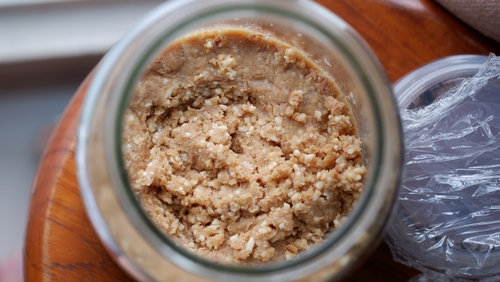
Miso paste—especially darker varieties like red or brown—is the closest match to doenjang’s flavor and texture. It works well in soups, broths, sauces, dressings, glazes, and marinades.
Use it in a 1:1 ratio, that is, one tablespoon of miso for every tablespoon of soybean paste.
Miso is a little sweeter and less pungent than doenjang, so your dish might be slightly milder. Red miso is best for hearty recipes, while lighter miso works nicely in more delicate dishes.
Tahini
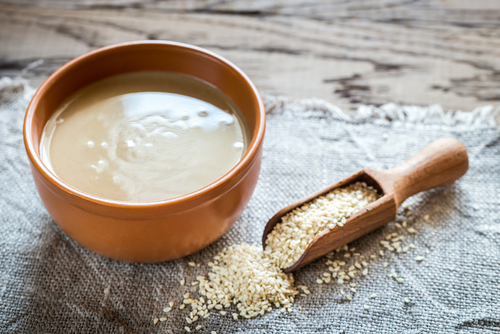
Made from sesame seeds, tahini has a creamy, nutty flavor that can act as a stand-in for soybean paste.
To get closer to doenjang’s savory depth, mix tahini with a pinch of salt and a splash of soy sauce. This combo works well in Korean sauces and marinades.
Fermented black bean sauce or paste
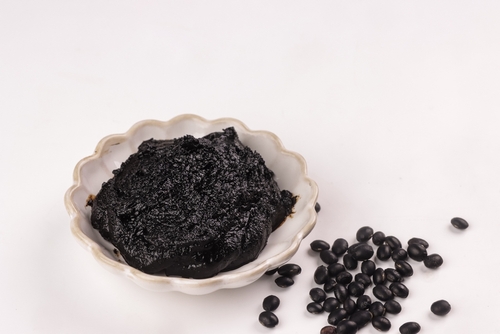
A staple in Chinese cooking, fermented black bean sauce is another good doenjang substitute thanks to its rich, savory flavor.
It’s usually saltier than soybean paste, so start with a smaller amount and adjust to taste. You can also dilute it with a little water or blend it with a mild paste to tone down the saltiness while keeping the deep, bold flavor that Korean dishes need.
Soy sauce (with modifications)
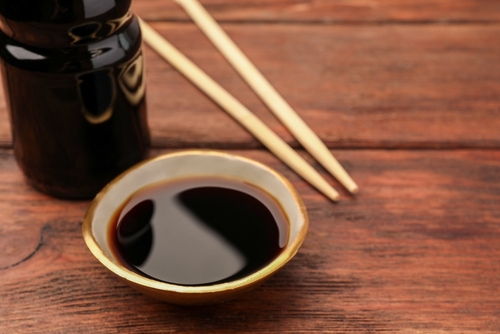
Soy sauce is a handy doenjang substitute that offers salty, umami flavors—but without the thick texture. To match the texture, stir in a little cornstarch or flour until smooth.
This mixture is great in marinades and sauces, helping your dish keep the right taste and feel.
Anchovy or fish sauce
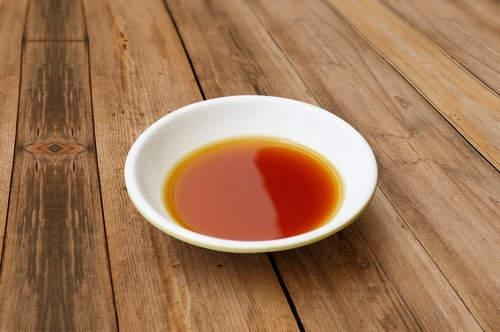
For non-vegetarian cooks, anchovy paste and fish sauce deliver a strong umami punch and deep, savory flavor. These soybean paste alternatives are more concentrated, so use them sparingly. However, they’re great for capturing the richness of traditional Korean cooking.
Tips for adapting recipes with substitutes
Adjusting Korean recipes with soybean paste substitutes takes some creativity, but these tips will help you get delicious results.
Balance flavors thoughtfully
If your substitute doesn’t quite match the taste of doenjang, add a pinch of sugar, a dash of garlic, or a splash of vinegar to adjust the dish. These small tweaks can lead you to the perfect mix of salty, sweet, and tangy notes.
Adjust quantities carefully
Many soybean paste alternatives vary in saltiness and intensity. For example, fish sauce is more briny, while miso paste is milder. So, add these ingredients gradually and taste as you go to keep dishes balanced without that overpowering fishy taste.
Experiment with fusion flavors
Instead of trying to match the taste of soybean paste exactly, use substitutes that let you put your own twist on a dish. For example, pair miso with roasted garlic for extra depth, or mix in smoked paprika for a gentle, smoky flavor. Small changes like these can turn a traditional recipe into something fresh and exciting.
Use fresh herbs and aromatics
Boost the flavor by adding fresh aromatics like green onions, garlic, or Korean chili flakes—gochugaru—or herbs such as ginger, garlic, or chives. These additions enhance the substitute and help your dish taste closer to the authentic version.
Where can you find soybean paste swaps?
Instead of sending money to Korea to import soybean paste, you can find alternatives online and at local stores.
Grocery stores like Whole Foods, Trader Joe’s, and Walmart often stock miso paste and tahini in their international or natural foods sections.
For specialty items like fermented black bean paste or premium miso, visit Asian supermarkets such as H Mart, 99 Ranch Market, or your local Korean grocery store.
If you can’t find what you need locally, online retailers like Amazon, Thrive Market, and specialty sites such as Yamibuy offer a wide range of authentic, trusted brands. The best part? Many list prices in your local currency, so you can shop with ease.
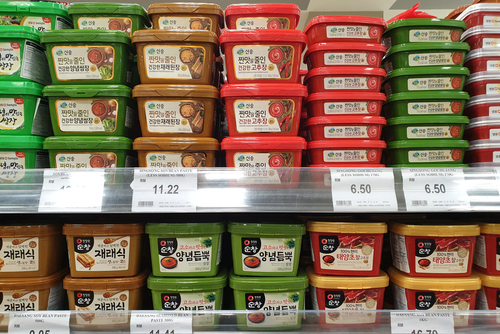
The soybean paste-free kitchen: Pairing alternatives with Korean dishes
If traditional soybean paste is unavailable, you can still bring authentic flavor to meals by pairing the right substitute for every meal. Here’s a handy guide to help you get it just right:
- Kimchi Jjigae (Kimchi stew): Use red miso paste to enrich the broth and deepen the Kimchi’s spicy, tangy flavor. For a creamier twist, mix tahini with soy sauce. It softens the heat without dulling the taste.
- Ssamjang (Korean dipping sauce): Blend miso paste with gochujang to preserve the savory-sweet spicy balance. This combination adds body and a smooth finish that ties everything together.
- Korean BBQ marinades: Combine dark miso paste or fish sauce with garlic, ginger, and brown sugar. The aromatics brighten the marinade, while the sugar enhances the bold flavors for a well-rounded glaze on meats or vegetables.
- Doenjang Jjigae (soybean paste stew): Stir in red miso to garnish the broth and complement vegetables, tofu, or seafood. For a plant-based twist, mix vegetable broth, tahini, and soy sauce for a rich, layered flavor.
- Bibimbap sauce: Combine miso paste with gochujang to create a bold, tangy-spicy Bibimbap sauce with a fermented edge. Alternatively, swap nut butter with soy sauce and chili flakes for a creamy, unique spin.
Bringing Korean flavors to your table
Soybean paste transforms simple ingredients into rich, comforting dishes. While matching its unique flavor isn’t easy, the substitutes we’ve covered above come impressively close, offering flexibility when traditional ingredients aren’t available.
The beauty of cooking lies in being adaptable. Whether you’re making a spicy kimchi jjigae or a flavorful marinade, these soybean paste swaps can introduce fresh flavor profiles while still honoring the heart of Korean cuisine. So, go ahead—experiment, adjust, and make each dish your own.
If this guide helps you bring a taste of Korea into your kitchen, bookmark it for later and share it with friends who love exploring global flavors. After all, great food is best enjoyed and discovered together.
FAQs
What is the closest substitute for soybean paste?
Miso paste is the closest alternative to doenjang in terms of flavor and texture, especially darker varieties like red or brown. It works well in soups, broths, sauces, dressings, glazes, and marinades.
Can I make my own soybean paste at home?
Yes, but it’s a time-intensive process that involves fermenting cooked soybeans with brine for several months. Homemade doenjang requires patience, careful fermentation, and proper storage to avoid spillage.
Can I skip soybean paste in Korean recipes?
Yes, but skipping soybean paste can change the flavor of your Korean dish. You can replace it with alternatives like miso paste, tahini, or fermented black bean paste to achieve a similar taste.
Is miso a good substitute for doenjang?
Yes, miso can work well as a substitute, especially in soups, marinades, and stews. However, it tends to be slightly sweeter and less earthy than doenjang, so you may want to add a bit of soy sauce or salt to bring the flavor close to the original.
Is miso paste the same as soybean paste?
No, miso and soybean paste are similar but not the same. They share a fermented soybean base, but miso is generally less earthy and even sweeter than doenjang.
What’s the best substitute for vegetarians?
Tahini and miso paste are excellent vegetarian substitutes, as they provide texture and umami without using animal-based ingredients. You can also mix tahini with a dash of soy sauce for a deeper, more complex flavor in soups and stews.
How should I store soybean paste for freshness?
Keep soybean paste in an air-tight container in the refrigerator to preserve its flavor and prevent mold. For long-term storage, you can portion it into small containers and freeze it.
Where can I buy soybean paste substitutes?
You can find doenjang swaps like miso, tahini, and more at most local Asian grocery stores. However, for a broader selection, check weekend markets, specialty stores, and online suppliers.
